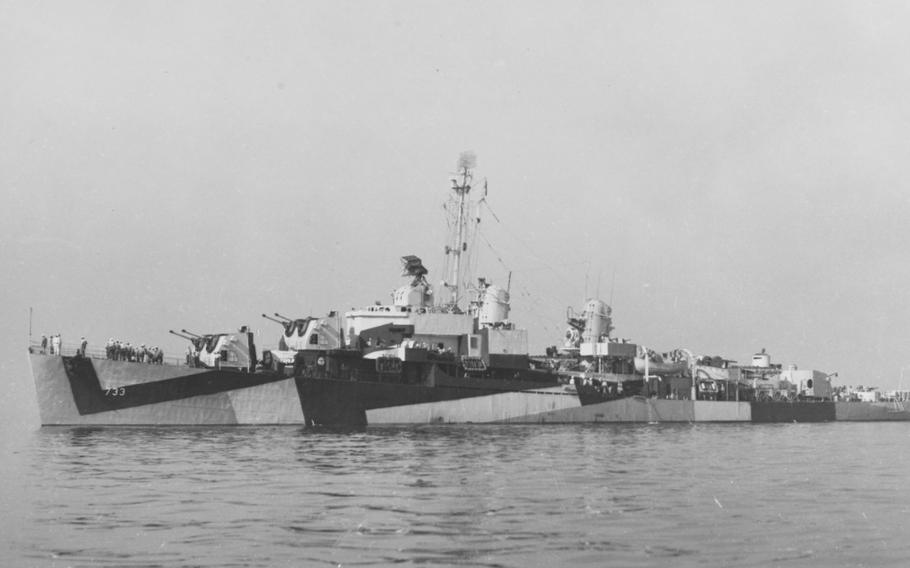
The USS Mannert L. Abele steams in the Atlantic Ocean less than a month after it was commissioned at Boston Navy Yard on Aug. 1, 1944. (U.S. Navy )
WASHINGTON — A Navy destroyer that sunk during World War II and claimed 84 Americans lives has been found off the coast of Japan, authorities announced Thursday.
The USS Mannert L. Abele, named for an American submarine commander, was the first U.S. warship sunk by a Japanese suicide rocket, according to the Naval History and Heritage Command. The ship was sunk April 12, 1945, the same day that President Franklin D. Roosevelt died.
The Abele was operating 75 miles off Japan’s northern coast when radar showed Japanese aircraft approaching. The destroyer then engaged the planes, damaging multiple enemy aircraft during the fight until one plane managed to crash on the warship. A minute later, the ship was hit at the waterline by a rocket-powered, human-guided bomb. The resulting explosion caused the ship’s bow and stern to buckle rapidly, according to the command.
The Abele was the first of three ships hit and the first U.S. Navy vessel sunk by a human-guided kamikaze bomb.
The underwater archaeology branch of the Naval History and Heritage Command said the identity of the wreck was confirmed with information provided by Tim Taylor, an ocean explorer and CEO of Tiburon Subsea. Taylor also operates the “Lost 52 Project,” a group working to identify and find missing battleships from World War II.
In a news release on the “Lost 52 Project” website, Taylor said finding the Abele was personal because his father served in the Navy and saw a similar kamikaze attack on his own ship.
“My father came close to the same fate of the crew of the Abele just days earlier. This was a very emotive discovery for me. Connecting me to my father,” Taylor said in a statement.
The Abele’s wreckage falls under the command’s jurisdiction and is protected from intrusion by U.S. law and under jurisdiction of the Navy.
“Mannert L. Abele is the final resting place for 84 American sailors who made the ultimate sacrifice in defense of their country,” said Samuel Cox, the director of the command. “My deepest thanks and congratulations to Tim Taylor and his team for discovering this wreck site. Its discovery allows some closure to the families of those lost and provides us all another opportunity to remember and honor them.”